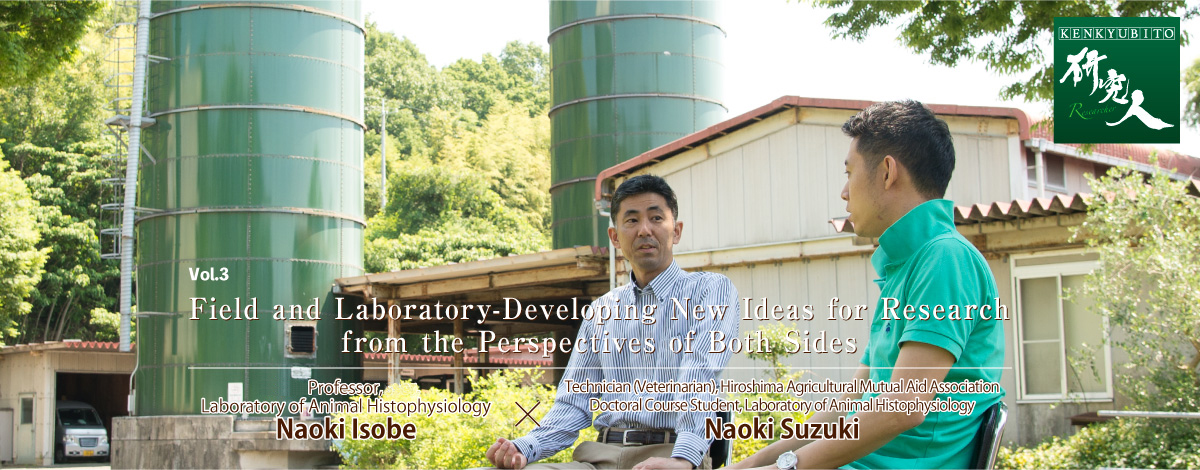
“Challenge of Cow Mastitis has United Us, Now We Are Working Together in the Lab.”
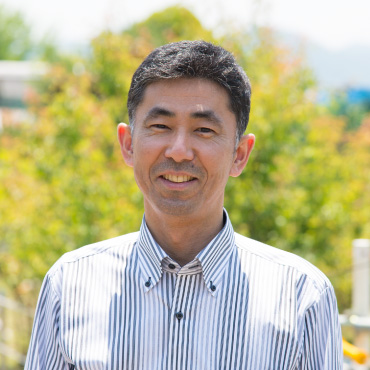
- Naoki Isobe
- Professor, Laboratory of Animal Histophysiology
- August 1, 1996-March 31, 2005
Research Associate, Graduate School for International Development and Cooperation - April 1, 2005-March 31, 2007
Assistant Professor, School of Applied Biological Sciences - April 1, 2007–Present
Associate Professor, School of Applied Biological Sciences
Isobe:Today we have an opportunity to discuss our research in this “Kenkyubito” (Researchers) interview. Thank you for coming.
Suzuki:My pleasure, thank you.
Isobe:Dr. Suzuki, we had known each other for some time because we used to attend the same academic congress and conventions on cow mastitis. I still call you “Dr. Suzuki,” even after you came here and joined me as a doctoral student.
Suzuki:That’s true (laughs.) I decided to enroll as a doctoral student thanks to your suggestion, as we have the opportunity to see each other more often and talk more with each other. I remember how happy I was when you invited me to join your research team through my workplace, the Hiroshima Agricultural Mutual Aid Association (Hereafter referred to as “NOSAI Hiroshima”). Before I graduated from university, I was torn between two wishes: I wanted to become a clinical veterinarian, but I also wanted to continue my studies.
Isobe:For my part, I appreciate the opportunity to spend time together in the lab. I imagine it must be tough for you to work as a vet specializing in cows on weekdays and work on our research on weekends here in Hiroshima University. How are you coping?
Suzuki:Well, am I? (Laughs) Sometimes I do have to work when others do not, but that’s all. My office is open seven days a week, and sometimes I have to work on weekends. I work on my shifts, and when I don’t work on weekends I go to the campus.
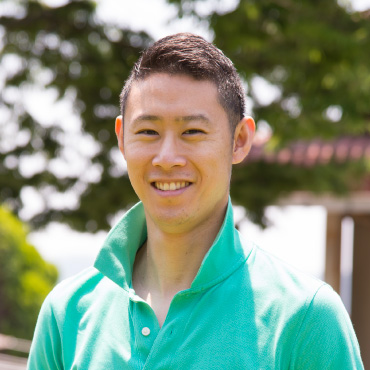
- Naoki Suzuki
- Technician (Veterinarian)
- March 31, 2014
Graduate School of Veterinary Medicine, Kitasato University - April 1, 2014–Present
Technician (Veterinarian), Hiroshima Agricultural Mutual Aid Association - April 1, 2018–Present
Doctoral Course Student, Laboratory of Animal Histophysiology
Isobe:You are a long-distance commuter. As if that wasn’t enough, it takes an hour from your workplace to the campus. I admire your effort and dedication.
Suzuki:It will take me a while to complete my study, so I am considering taking advantage of the Registeration Period Extension offered by the university.
Isobe:That is the system under which students can apply for the extension of the period of registration when it takes more than three years to complete the required courses to get degrees. Since you have the support of Hiroshima University, I hope you continue on the current project.
Suzuki:Thank you for the encouraging remarks. I also appreciate my workplace colleagues in NOSAI Hiroshima, who are very supportive of me.
Isobe:As you mentioned NOSAI, I am wondering why there hasn’t been a closer relationship between the university and NOSAI Hiroshima, where you work, though there is NOSAI Higashi-Hiroshima close to our Laboratory. I have long thought it is a waste of resources for research. I believe we can establish close ties that enable us, for example, to gather samples from NOSAI Hiroshima and in turn, we can do detailed research about them. That would benefit both of us. The good thing is now it seems we are heading for better mutual relations.
Suzuki:That’s true. I can’t agree with you more (laughs).
Isobe:I appreciate you, Mr. Suzuki, for setting a great example by joining our study project and hope that other staff at NOSAI will follow suit. Just as you came to us to study cow mastitis, other researchers can pursue, for example, areas such as animal food digestion or metabolism in the Laboratory of Animal Nutrition and Feeding. Hiroshima University is ready to offer research opportunities and resources to respond to the various study needs of veterinarians and researchers.
“Why Cow Mastitis? There are Fewer Researchers than Necessary.”
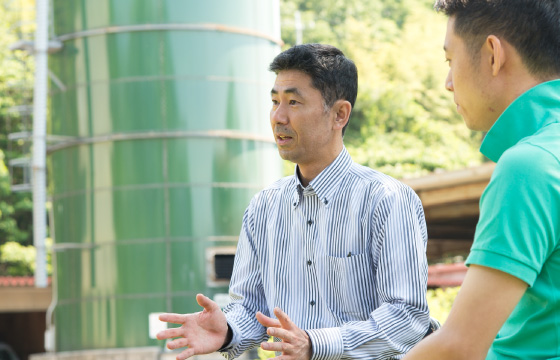
Isobe:Now, let’s talk about our research subject, starting with the reason why we are studying an unusual theme like cow mastitis in the first place.
Suzuki:Yes, would you explain the issue surrounding cow mastitis first?
Isobe:Sure. Many people will still remember the milk shortage that happened in the recent past. Butter virtually disappeared from store shelves at the time due to the sharp decline in the milk production. The decline was caused by the decreasing number of cows, decreasing milk yield per cow, and the fact that by then, we had become more keen to find the quality problem in the milk. These factors contributed to the overall decline in milk production. Cow mastitis, caused by the invasion of microbes from outside, was one of the primary causes that led to these problems.
Suzuki:That’s true. Cow mastitis seriously affects the quality and quantity of the produced milk, and such milk cannot be sent to the market. The problem is, it happens too often.
Isobe:Yes, it happens so frequently that ten to twenty percent of cows raised by a dairy farmer may have cow mastitis. Cow mastitis is an old disease, and it remains so hard to eradicate despite various attempts at containment. There are too few researchers in Japan to provide the most critical defense against the disease, which is prevention and early intervention. Considering how devastating the impact of the disease is, it is an unfortunate situation.
Suzuki:I totally share your concern.
Isobe:Against this backdrop, I started to study the disease after I joined the Laboratory of Animal Histophysiology in 2005. At first, I was still wondering which field of study about cows I would specialize, but then I saw Dr. Yoshimura(※1), my superior at the laboratory, working on innate immunity of chickens. I sensed that I could bring the theme to other species of animals, which was when the idea of linking cow’s mastitis to their innate immune system came to my mind. I knew it was still an entirely unexplored field of study and there were a lot of things for me to learn and explore.
Suzuki:That was your moment of serendipity?
Isobe:I was not expecting it, but since then, I have been studying the mechanism of the innate immune system of cows. Specifically, now I examine how the system helps cows produce antimicrobial peptide(※2) and lactoferrin(※3) inside their udder, how much of these substances are in the milk they provide, and how they work to protect cows from getting cow mastitis. Although few researchers are directly taking on the theme, many people want to know about it. Many among these people are veterinarians. That explains the reason why so many vets from NOSAI nationwide join related academic meetings and conferences.
Suzuki:That’s true. The issue is vets are too busy examining their sick animals to do studies and research though they occasionally manage to participate in academic meetings. I am exceptionally fortunate to study at a graduate school while working for NOSA as a vet.
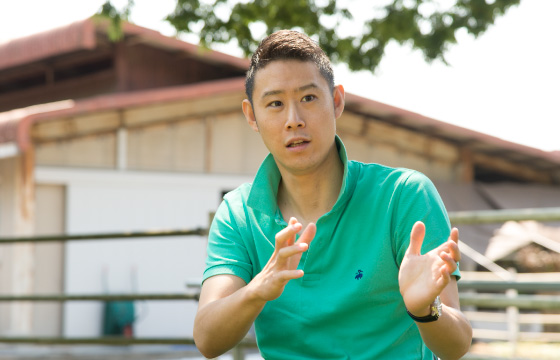
Isobe:Now, would you talk about your approach to cow mastitis?
Suzuki:I am trying to uncover the mechanism of how the immune system weakens particularly during the summertime. When cows are exposed to the heat, various changes happen in their body. These lower the function level of the udder immune system by disrupting the balance of their hormones. As a result, cows are unable to cope with incoming microbes and develop cow mastitis.
Isobe:So, Mr. Suzuki, your goal is to find a treatment that enables cows to maintain resistance to microbe infection by keeping strong immune system functions even during the summer.
Suzuki:Exactly.
Isobe:Our research goal has a lot to do with dairy farmers. For consumers, milk is something they can take for granted. They only buy and consume it. They do not see the painstaking process dairy farmers go through to put the milk on the store shelves. These farmers take the utmost care to keep their tools clean to protect cows against cow mastitis. Still, the reality is it happens too often, and the affected milk does not make it to the market. It ends up being discarded. If an infected cow produced 30 liters of milk a day, the farmer would be losing 3,000 yen a day, considering the current market price of milk is about 100 yen a liter. That is a waste of all the effort and care the farmers put into their jobs, yet they persevere with some sense of resignation.
Suzuki:Too often, farmers’ efforts do not pay as the cost of feeding cows is ever increasing.
Isobe:I must say it’s tough to make a profit through the job.
Suzuki:I care deeply about the hardship dairy farmers are facing as someone who sees and talks to them on a daily basis. There are two types of cow mastitis: clinical and subclinical. The latter is hard to detect just looking from the outside. So we use a method for detection which goes like this. First, we regularly monitor the somatic cell count of the stored milk in the bulk cooler at each dairy farm. If the somatic cell count increases, which could be a sign of developing cow mastitis, we ask the farm to examine the udders of all the cows it has, one by one. Sometimes farmers can detect affected cows using their knowledge through experience. Sometimes farmers find it too difficult to discern without relying on a test reagent. The latter is the latent mastitis. Some farmers still try to detect the disease by licking the sample milk. They say they can tell by the taste. When the farmers detect the sign of the disease, they contact us, veterinarians.
Isobe:I think the larger mission through our research is serving those dairy farmers.
Suzuki:Definitely, I agree.
“There are Plenty of Rewards in our Research. Pay them Forward to our Community.”
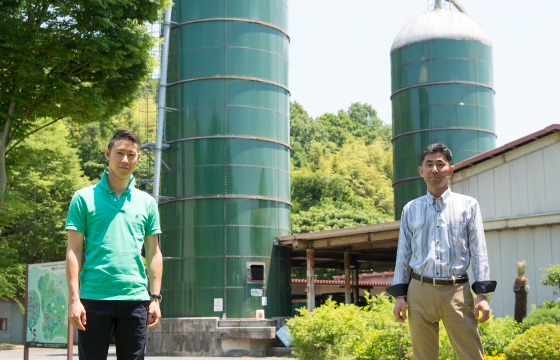
Isobe:The considerable benefit of the innate immune system is that it is a non-specific reaction. It can fight against any type of pathogen, unlike the vaccines that work against a specific target. So I believe it is well worth trying to find ways to strengthen the innate immune system so that it can produce enough antibacterial substances to fight against any incoming microbe. That’s why examining innate immune mechanisms is essential.
Suzuki:You have a point. The first thing veterinarians need to know when treating mastitis is the source of infection. So I take affected milk samples and bring them to NOSAI clinic, where we conduct tests on the samples. We place and cultivate the bacteria from the samples in a culture medium. We examine how a colony takes shape after 24 hours or later. However, a strange thing happens here; in one–third of these test cases, we fail to detect any sign of bacteria although they are samples from affected cows. We did not know why until recently.
Isobe:That is until the concept of antimicrobial factor came up. Eventually, I came up with the idea that milk has a lot of antimicrobial factors. Considering that there is some time lag between collecting and culturing the samples, it seemed to me there was a reasonable chance that some antimicrobial factor might have killed the bacteria during the time-space. The idea felt a little counterintuitive at first given that we tend to regard milk as very nutrient rich and thus a fertile ground for bacteria. That is why no one has thought that milk could kill bacteria.
Suzuki:That was an eye-opener.
Isobe:I conducted follow-up research from the perspective of antibacterial factors, and my hypothesis proved to be correct. I was surprised by my findings. The findings were published both in print and at academic gatherings, for which I am sincerely grateful. It helps NOSAI nationwide, by way of suggestion, to improve the test results by shortening the time between sample collection and test conducting and keeping the samples at low temperatures.
Suzuki:Isn’t it rewarding to know that your work is making a difference in peoples’ lives?
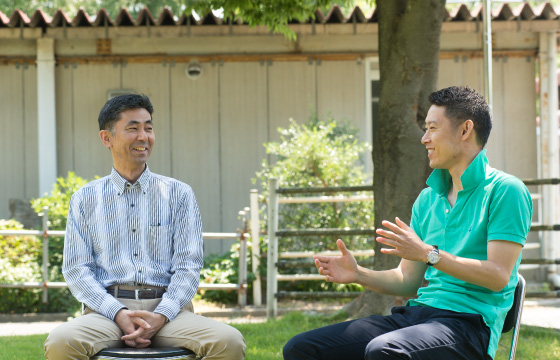
Isobe:It is, for sure. I always want my work to be adopted in the workplaces, produce useful goods and services, help dairy farmers, and even improve the lives of the general public. What I enjoy most about working is exchanging opinions with my fellow researchers who share my theme of research. Listening to other experts truly excites and inspires me because it gives me a whole new perspective with which I can review my current work. That is even an enlightening experience.
Suzuki:I can imagine how you feel when encountering a different perspective. I used to focus on the molecular epidemiology of bacteria when I was an undergraduate student, which led to my tendency to look at cow mastitis mainly through the lens of bacteria. That seemed okay because bacteria is by far the leading cause of cow mastitis, after all. However, Dr. Isobe, you have been looking at the disease from the immunological point of view. Getting to know your approach certainly gave me a new perspective.
Isobe:Conversely, I have so much to learn from your expertise in bacteria because I am not familiar with the study of bacteria.
Suzuki:There are many types of bacteria. So, even an infection from similar E. coli bacteria can lead to an entirely different clinical condition depending on the strain from which it originated. I find it quite intriguing. Likewise, so many kinds of bacteria can lead to cow mastitis, which makes things more complicated yet fascinating (laughs.)
Isobe:You are also researching the appropriate dose of antimicrobial drugs.
Suzuki:Yes. The problem is, although there is a wide variety of antimicrobial drugs, most of them are not effective against SA (Staphylococcus aureus). Even when it seemed to work, the bacteria often reemerges and strikes again in two weeks, which makes SA particularly troublesome.
Here, let me explain my policy on using drugs and treating cows. Treating cows means, to me, going beyond protecting the health of a specific cow because what they produce will be consumed by humans. That is where I part ways from the vets who treat pet animals, and that notion should stay with me whenever I treat cows. I want to avoid using antimicrobial drugs whenever possible because it will become a public health issue should carryover takes place.
On the other hand, discontinuing the use of all antimicrobial drugs will inflict devastating economic damage on dairy farmers because cow mastitis hugely affects the economy of milk production. I treat cows thinking hard about how to use adequate yet minimal doses of antimicrobial drugs and only when it is necessary. So my expectation is quite high about our current focus of research that is boosting cows’ immunological function to prevent and stave off cow mastitis because it will lead to less use of antimicrobial drugs, which will be good for society, the environment and public health. This aspect of social contribution is the reason why I am so proud of our research. I have long been looking at the disease from an epidemiological point of view. However, now I am determined to learn immunology to look at the illness from immunological aspects and also from the perspective of the animals themselves.
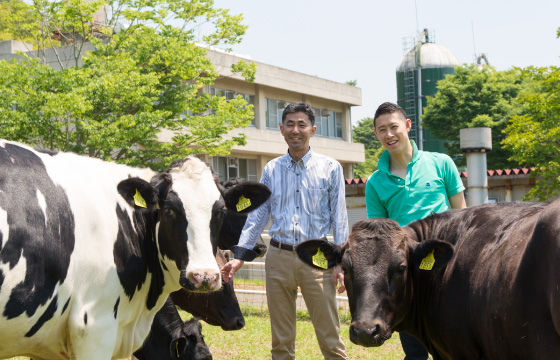
Isobe:I look forward to finding out what achievements you will bring to our research. Let’s continue to work together.
Suzuki:I hope I can measure up to your high opinion of me.
Isobe:I know you will. Thank you very much for coming today.
Suzuki:My pleasure. Thank you.
【Interviewed on June 2, 2018】



*Note